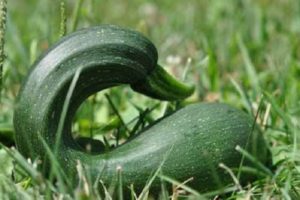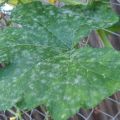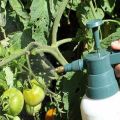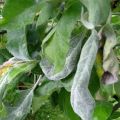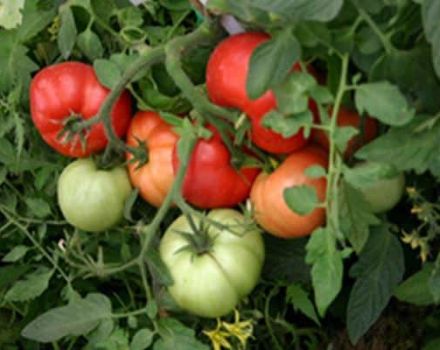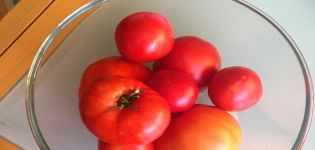Control measures and treatment of powdery mildew on zucchini: how and what to process
The cultivation of vegetable crops has its own characteristics, for example, zucchini, which grow well in the middle zone of our country, do not like temperature extremes. The defeat of fungal spores during a sharp cold snap or heavy rains leads to the development of powdery mildew on zucchini.
The disease develops on leaves and stems and can completely or partially destroy the crop. To avoid this, you need to know what signs indicate infection, and what methods should be used to effectively combat.
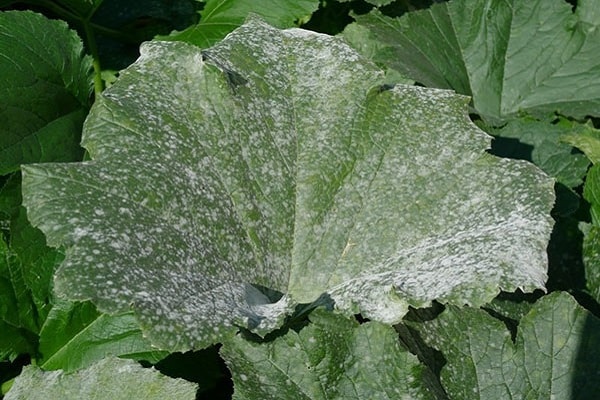
What is it: types of diseases and foci of plant damage
Even using the correct farming system and quality seeds cannot guarantee a good harvest. Plants are often affected by various pests and diseases, one of which is powdery mildew.
It is of two types:
- A disease that develops on zucchini and other melons and gourds, in the form of a specific plaque and is directly called powdery mildew.
- A false disease that most often appears on cucumbers.
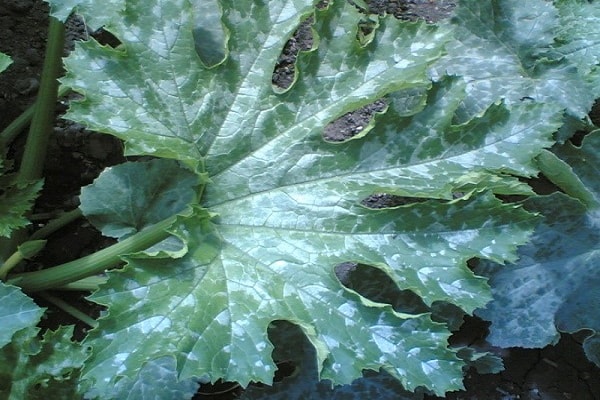
The cause of both varieties is a fungus that forms in the soil, with the only difference that the real disease manifests itself on the leaves from the outside of the plant, and a false mealy infection first affects their inner side and only at the last stage do spots appear on the outside.
Before picking up remedies for powdery mildew on zucchini, you need to understand its signs.
External signs of the disease
Common signs of the disease are the appearance of white streaks on the leaves. They seem to be sprinkled with flour and do not cause much alarm at first. However, if you do not immediately start treating powdery mildew on zucchini, the disease will quickly spread to the stem and other plants growing nearby.
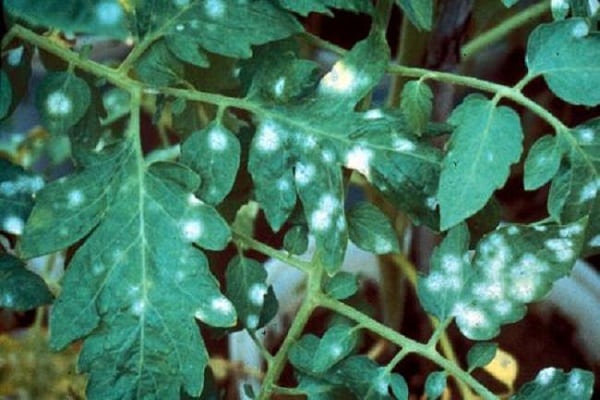
After a couple of days, a pleasant white coating takes on a brown tint. This means that the process has moved to a new stage and can destroy the entire plantation, without allowing the fruits of zucchini and other plants in the garden to ripen.
However, despite the similarity, the symptoms of the disease in different plants may differ. For example, on zucchini, powdery mildew causes leaf wilting. This is due to the fact that the white film does not allow the sun's rays to penetrate into the leaf and without nutrients they simply die off.
Fungal spores can be carried by wind or water and infect other plants in the area. To prevent this from happening, you should take the first steps in this disease.
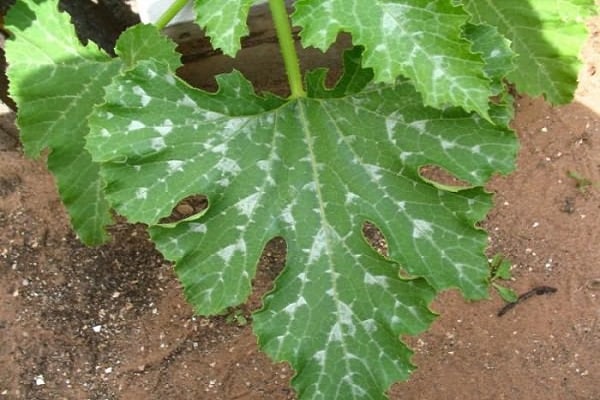
The causes of powdery mildew
The disease develops actively when it is hot or rainy weather. These are ideal conditions for the proliferation of harmful fungal spores. If the lesion is large, not only the leaves, but also the lashes of plants begin to wither.
There are many causes of powdery mildew. Often it is provoked by the remaining parts of plants that have not rotted from last year, where disease-causing spores can remain.
In addition, you should pay attention to the following aspects:
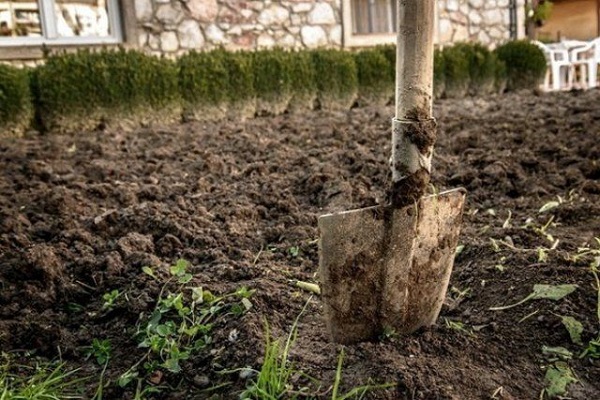
- Soil contamination. If there was fungal mycelium on the site last season, its spores could overwinter in the ground and begin activity with the arrival of heat.
- Failure to comply with the rules of crop rotation on the site.
- Errors in agricultural technology during plowing and tillage.
- The presence of weeds both in the garden and in the areas adjacent to it. They become a refuge for harmful bacteria and disease-causing spores.
- Fertilization errors. For example, excessive fertilizing with nitrogen fertilizers can not only fail to produce the desired results, but also provoke a worsening of the situation. Lack of potash can also cause plant disease.
- Placing shoots too close after development can cause stagnant water, which increases the humidity of the air and infects plants inside the lashes. The result is a beneficial environment for powdery mildew.
- A sharp change in temperature, heat or high humidity is also an impetus for the development of the disease.
- Lack of processing of zucchini from powdery mildew with protective preparations.

Powdery mildew control measures
If, on examination, a small number of spots on the affected leaves were found, indicating powdery mildew, such leaves and shoots must be removed immediately. The first steps should be careful: in order not to shake off the spores of the fungus on healthy plants, you need to carefully put the removed parts in a plastic bag and remove from the site. It is advisable to burn them immediately.
In the fight against powdery mildew on zucchini, it is imperative to thin out the bed in order to open access to light for the plants and stop feeding for a while. Then process the remaining zucchini with chemicals or special fees based on folk recipes. Regulate watering of plants, avoiding waterlogging and drying out of the soil.
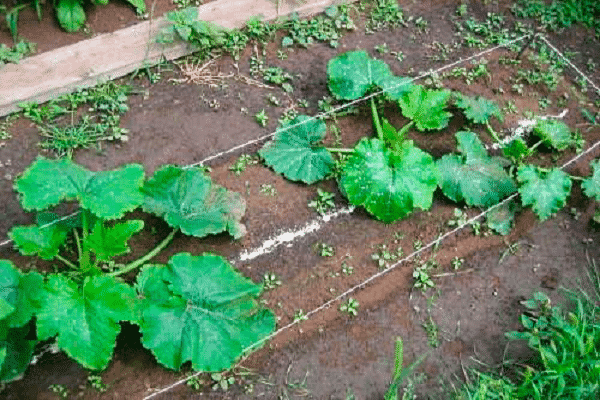
How to help the plant at an early stage?
Before getting rid of powdery mildew on zucchini, you should familiarize yourself in advance with the effect of various agents on both plants and humans after eating the product. And, of course, when choosing seeds, make sure that they are resistant to this disease.
Before processing with chemicals, the following must be done: carefully study the contraindications for their use, because they will need to be used more than once. For treatment, fungicides are most often used, such as Topaz, Fundazol, Quadris and others.
Spraying is carried out with a warm solution. For people with a tendency to allergies, it is better to abandon chemicals and use folk methods of struggle. However, even without health problems, it is necessary to be extremely careful to use chemicals and in no case to eat food after processing until the due date, when the impact of aggressive components is over.
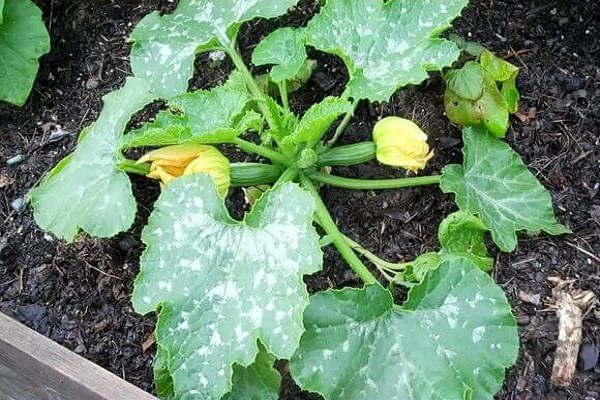
Popular medicines and their disadvantages
You can fight powdery mildew on zucchini both with folk remedies and with medications. Folk recipes will especially interest those who have a negative attitude to the use of chemicals in growing vegetables and fruits. However, in the most difficult cases, it is impossible to abandon the use of chemicals, since you can completely lose the crop.
However, here, spraying should be carried out in accordance with the severity of the infestation of the entire planting area.Treatment is extremely necessary if more than 10% of plants are affected by powdery mildew. In other cases, you can use safer options.
One of these measures is to reduce the lesion focus by cutting out diseased lashes of plants. In this case, each time a knife or pruner must be dipped into a solution of fungicide and potassium permanganate and cut off several centimeters of a healthy lash.
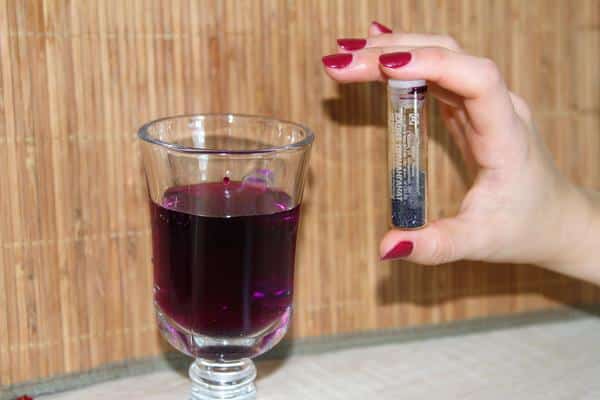
Funds from the people
Folk remedies as a measure of control against powdery mildew on zucchini are effective in the very early stages of plant damage.
The most famous among them are:
- Composition of soda ash and soap. In five liters of water, 25 grams of soda is dissolved and 5 grams of liquid soap is added to the solution. The surface soil layer is cultivated twice with a break of ten days.
- Potassium permanganate solution. You need to take 2.5 grams of the drug in a bucket of water.
- Infusion of humus, preferably cow. Water and manure are taken in proportions of 3: 1 Infusion of rotted manure (preferably cow)
The infusion time is not less than three days.
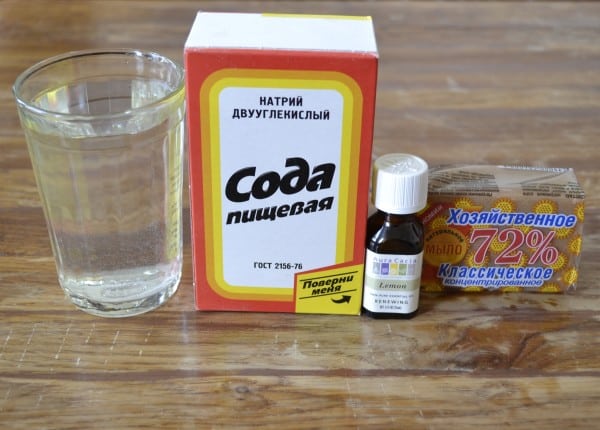
There are other equally effective recipes that can be used to prevent and treat powdery mildew on zucchini leaves and other plants. Their main advantage is safety for humans.
Chemical methods
You can fight and fight powdery mildew both on zucchini and on other plants by making treatment with chemicals. They must be prepared and used strictly according to the attached instructions. In this case, it is necessary, if possible, to pre-cut the ripe fruits, and the ovaries should be treated with a minimum amount of the drug, since they grow very quickly, and it will be impossible to eat them immediately. Despite the low hazard class of most drugs, zucchini cannot be eaten after such processing for about two weeks.

Such preparations as soda ash solution, copper sulfate and Bordeaux liquid, which contain sulfur and copper, which have a detrimental effect on the fungus, are in great demand among gardeners. Of course, they should not be used constantly, as addiction will occur, and this remedy will become ineffective.
Prevention
The best way to protect your garden from powdery mildew and other diseases is with prevention recommendations. After all, if such measures are carried out in a timely manner, the disease will not appear at all.

And for this:
- At the end of the season, it is necessary to clean the garden and burn all tops and other plant residues that can become breeding grounds for diseases.
- The soil needs to be dug up before winter so that the powdery mildew spores freeze out in cold weather.
- Observe the rules of crop rotation and change the place of planting zucchini and other vegetables every year. They can be planted in their old place only after four or five years.
- Weed and thin out the garden, as well as control the watering and feeding of plants.
- Pay special attention to the ventilation of greenhouses where condensation is likely.
- It is necessary to inspect the zucchini branches as often as possible, especially in hot weather, in order to take timely measures to eliminate the lesions.
- Since spores of the fungus can be carried by insects, it is necessary to carry out preventive treatment of zucchini from powdery mildew with gentle agents.
This approach to the problem will help to correctly assess the situation and choose an effective way to deal with it.

